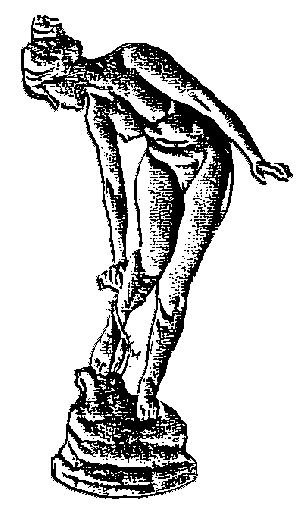The exhibition was conceived and designed to display as an integrated installation in the large space of the University Gallery with its dramatic wave ceiling. The main elements of the installation are four large floor pieces by Graham Lang, shaped wall pieces (in hand-etched stainless steel and painted aluminium) and rubber stamps by Ross Woodrow. One of the floor works contains an internal projector and screen showing a series of images from southern Africa. Many of these are from Lang's family history in Rhodesia and South Africa
[The University of Newcastle Art Gallery, 17 July - 23 August, 1998] In an exhibition of constructed and painted objects Graham Lang and Ross Woodrow reflect upon the colonial experience in South Africa and Australia .
The contrasting approaches to production in the floor and wall works are unified by use of the vocabulary of British nineteenth-century imperial power which was common to both Africa and Australia. For to the British, the instruments of civilization were interwoven with the symbols of imperial power. The once potent symbols of the crown, the British bureaucratic system, the railway, not to mention the classical art of the Royal Academy are today mostly embarrassing reminders that bestowing the gifts of civilization was a masquerade for often brutal conquest.
Installation views below (1998, Newcastle Australia)
Selected Wall pieces by Ross Woodrow from the exhibition Deadly Gifts 1998. enamel paint on shaped, powder-coated aluminium average size c 120cm x 120cm
Shaped and drypoint etched 316 stainless steel average height 210 cm (this was made in 1998 when laser cutting was recently available although it was prohibitively expensive and traditional jigsaw cutting with tungsten blades was used)
Shaped and drypoint etched stainless steel average height 210 cm
RUBBER STAMPS FROM THE EXHIBITION DEADLY GIFTS (below) In 1998 laser cutting or burning of rubber was a new process that reactivated the possibilities for the rubber stamp which was always the perfect symbol of colonial bureaucratic power. Visitors were invited to make up their own catalogues (in the form of a passport) and print pages with a variety of stamps of the works in the show. [incidentally this was before the Sydney Biennale used a similar ploy]
example above of the relationship between painted, shaped metal images and rubber stamps on wall opposite. This image, which is appropriated from an illustration of a sculpture in a Royal Academy picture book from 1893, was first painted on the shaped aluminium. It was then photographed with a digital camera and converted to the black and white embossed version with a computer graphic program. The resulting pixilated image was in turn scanned by a machine that guides a laser which cuts the rubber stamp. The final print is made using stamp-pad ink on laid note paper. [The naivety in explaining the technology used is because this was written in 1998]
IN 2001, a version of this exhibition was taken to the Broken Hill City Art Gallery under the title: IMPLEMENTS OF PERSUASION: the shared history of British conquest in Africa and Australia.
Works by Graham Lang and Ross Woodrow.
Opening: Broken Hill City Art Gallery Thursday 10th May, 7.00 p.m.
Exhibition dates: May 10 to June 7, 2001. [This was the old Gallery venue: Broken Hill City Art Gallery Cnr Blende & Chloride Sts.]
The back corridor of the gallery featured works by Ross Woodrow that had been originally presented in his 1996 exhibition Bush Burial.
oil paint, screen print on shaped aluminium with gold leaf
The foreground Mixed media construction is by Graham Lang
Copyright © (2001 - 2019) Ross Woodrow --All Rights Reserved


























